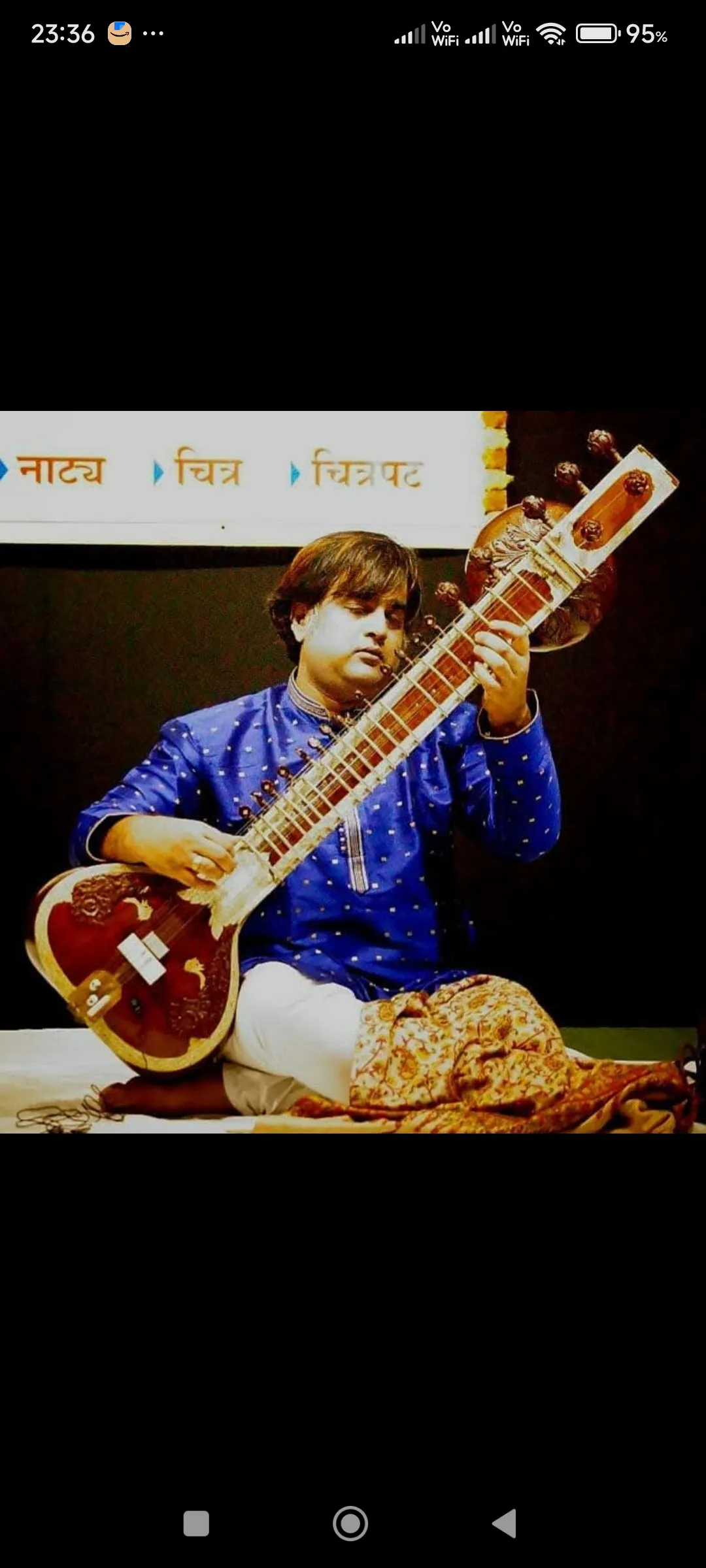Ragas on Sitar | Hindustani Classical
 1-on-1 Class
1-on-1 ClassIntermediate
by Pt. Supratik Sengupta
22 Years Experience
Disciple of Padma Bhushan Pt. Buddhadeb Dasgupta. National scholarship from Ministry of Culture, Govt. of India.
US $24 per class |
for 1-on-1, 45 mins class
Recommended: 1 class per week | 12-16 weeks to level up

You can choose your time slots in the next step. ipassio has thousands of happy learners from the US, Canada, Australia, UK, Europe, UAE, and India.
Instruction Language
: English, Bengali, Hindi
Course Summary
This long term course tries to build on what the student learn in the basics course and tries to make him performance ready in a short duration of time. Students enrolling for this course get to practice and learn sapat taan meaning simple straight taan (Taan meaning a sequence of notes sung in medium or fast tempo, adhering to a taal cycle). Students enrolling for this course get to learn different ragas such as yaman, bhupali, bageshree, todi and malkauns. By the culmination of this course students will be able to play any of the taught tagas in sapat taan or as palta.
Learn on
ipassio Video
Skype
Google Duo
WhatsApp Video
BOTIM
Teacher's Profile

Teacher Skill Keywords
Hindustani Classical Music, Ragas, SitarEducation
Musician Scholar from ITC Sangeet Research Academy, Kolkata
Work Details
Sitarist, Musician - Music
Top Grade Artist - All India Radio And Television
About the Course
Students enrolled for this course will learn an important aspect of raga which pertains to the sequence of notes when rendered, the way they are rendered and the speed at which they are rendered, known as challan in Hindustani classical music. Students through this course will be taught the nuances that will help them get a firm grip or pakad on the challan or the aspects of ragas mentioned earlier. Through the initial part of this course students will be taught a composition adhering to 16 beats or teen tala, playing it on the sitar with fixed taan and jhala. Further on in the course students will be introduced and taught about alap which relates to the first portion of the music rendered in an instrumental performance, also meant to introduce the raga, it is slow in tempo. Students also learn about jor, besides learning 5 different types of taans in meer and gamak. Jor is considered to be the musical play that comes after alap at beginning of a performance and before the conclusion using, jhala. Gamak is the ornamentation or alankara that emphasises on the ragas individual characteristic. Gamak is an important aspect of hindustani classical music. Gamakas are defined as per ragas, as such the gamakas for each raga differs in its characteristics or the style it is presented. The concluding lessons in this course will teach students the system to adhere to while rendering a raga on the sitar, to make the students performance ready.
If the student wants to get more insights on the basics of how to play sitar, the fundamentals of Hindustani classical music starting with the basic notes of sa, re, ga, ma, pa, dha, ni, here is another course tailored by Supratik Sengupta: Sitar Basics | Hindustani Classical
About Supratik Sengupta: Supratik Sengupta born in a family of musicians, was fortunate to find his first teacher in his father Shri. Kuber Sengupta, who helped him step into the world of music at an early age. Ever since, Supratik has taken confident strides towards becoming an exponent of sitar. Soon after, Supratik started his formal training in the guidance of Biswanath Das and Debaprasad Chakraborty. Then on, Supratik took tutelage from Sangeet Acharya Ajoy Sinha Roy and Dr. Pradip Chakraborty for long, before deciding to enroll at the ITC Sangeet Academy to train under Pt. Buddhadeb Dasgupta and Pt. Partho Pratim Chatterjee. His time at the academy was spent as a musician scholar under his respected gurus mentioned earlier. Surpratik was destined to shine as a musician and the training he underwent ensured that his destiny was not impacted. Supratik’s talent was recognised by the ministry of Travel, Tourism & Culture that bestowed on him a national scholarship. He is recognised an A grade artist by All India Radio and has performed at multiple locations both in India and Abroad.
... Read More
This course helps you further the learning received in the basics course. It helps you understand the different variations in pitch and tempos by practicing jor and jhala, besides giving you an understanding about raga specific ornamentation or gamak that is strictly defined as per the raga being played. Learning as per the guidelines of the sangeet research academy and tutored by the ace exponent of sitar Supratik Sengupta, will ensure students learn the in demand tricks and skills from their teacher enabling them to face the next levels with confidence.
... Read More
A sitar in good playing condition.
... Read More

Available For All Age-Groups

1,604 Online live sessions completed
Our teachers recommend customized classes for an effective learning experience. Here's why!
Every individual
Has a unique learning style
Is at a different learning stage
Has different posture and instrument holding style
Has different mind-hand coordination
Has a different understanding of rhythm and melody
And a different GOAL!

Available For All Age-Groups

1,604 Online live sessions completed
Our teachers recommend customized classes for an effective learning experience. Here's why!
Every individual
Has a unique learning style
Is at a different learning stage
Has different posture and instrument holding style
Has different mind-hand coordination
Has a different understanding of rhythm and melody
And a different GOAL!
What you get?
World-class masters as teachers
Personalized & Interactive 1-on-1 classes
Course studio that amplifies passion learning
Access to global creative community
Pay as you go - 2 classes at a time
Milestone-based learning for best results
Statement of Accomplishment
Teacher's performance bits for reference
World-class masters as teachers
Personalized & Interactive 1-on-1 classes
Course studio that amplifies passion learning
Access to global creative community
Pay as you go - 2 classes at a time
Milestone-based learning for best results
Statement of Accomplishment
Teacher's performance bits for reference

Student Reviews
FAQs
Additional Resources
What Makes ipassio Your Best Fit?

Online, real-time classes
From the comfort of your home, 1 on 1 online interactive classes are scheduled at your convenient time.

World class performers as educators
Award-winning teachers customize the course just for you. Their structured learning methodology lets you always track your progress.

Pay as you go
No long-term commitment. Pay for as few as 2 classes at a time. When you can't make it for the class, you can mutually reschedule with ease.








